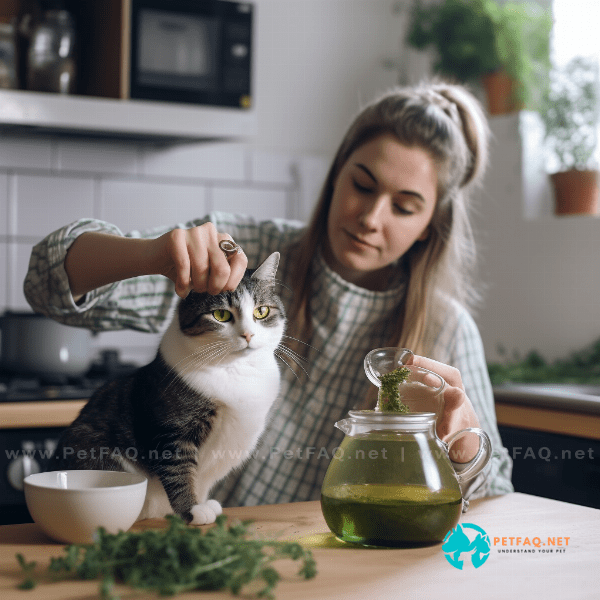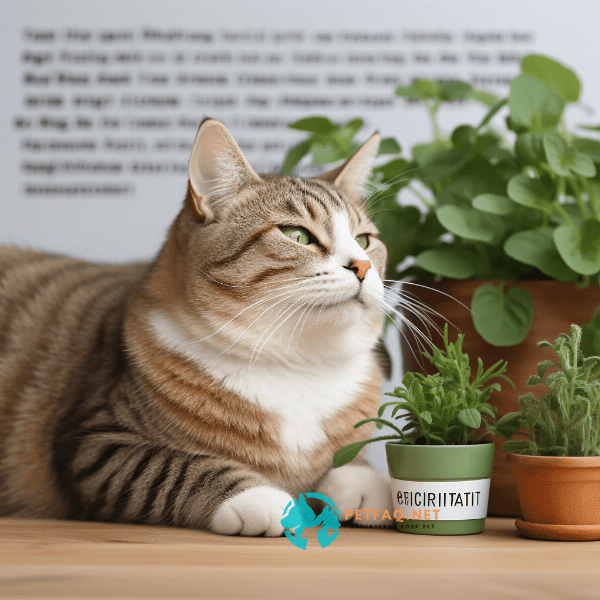Table of Contents
- What is Catnip and How Does it Affect Cats?
- The Link Between Catnip and Aggression in Felines
- Understanding the Different Types of Aggression in Cats
- How to Recognize Signs of Aggression in Your Cat
- Tips for Managing Aggression in Cats Who React to Catnip
- Alternatives to Catnip for Feline Enrichment and Play
- Seeking Professional Help for Aggressive Cats: When to Call a Veterinarian or Behaviorist
- Final Thoughts: Keeping Your Cat Safe and Happy Around Catnip.
What is Catnip and How Does it Affect Cats?
What is Catnip and How Does it Affect Cats?
Catnip, also known as catmint or Nepeta cataria, is a plant that belongs to the mint family. It is a common herb that is found in most parts of the world and is often used in teas and other herbal remedies. However, catnip is most well-known for its effect on cats. When cats smell or eat catnip, they often exhibit behaviors that may seem strange or amusing to their owners.
The active ingredient in catnip is nepetalactone, which is found in the plant’s leaves and stems. When a cat smells or eats catnip, the nepetalactone stimulates the cat’s olfactory receptors and sends signals to the brain. This can cause a variety of reactions in cats, including:
1. Licking and chewing: Some cats will lick and chew on catnip plants or toys.
2. Rubbing and rolling: Cats may rub their faces and bodies on catnip plants or toys, or roll around on the ground.
4. Relaxation: Some cats become more relaxed and sedate after being exposed to catnip.
It is important to note that not all cats react to catnip. Approximately 50-75% of cats are affected by catnip, and the reaction can vary depending on the cat’s age, sex, and breed. Additionally, the effects of catnip are temporary and usually only last for a few minutes to an hour.
Understanding how catnip affects cats is important when it comes to managing aggression in felines. While catnip is generally considered safe for cats, some cats may become overly excited or aggressive after being exposed to it. In the next section, we’ll explore the link between catnip and aggression in cats and what you can do to keep your cat safe and happy.
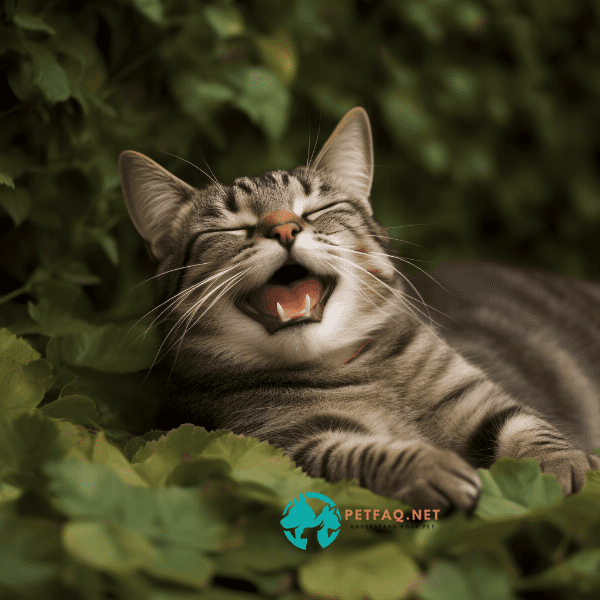
The Link Between Catnip and Aggression in Felines
The Link Between Catnip and Aggression in Felines
Catnip is generally considered safe for cats and is often used as a tool for feline enrichment and play. However, some cats may become overly aggressive after being exposed to catnip. This is because catnip can stimulate a cat’s predatory instincts and cause them to become more aggressive in their play.
One type of aggression that is commonly associated with catnip is play aggression. Play aggression is a normal behavior in cats, but it can become a problem if it becomes too rough or aggressive. Some cats may become overly rough or aggressive during play, which can lead to injuries to other cats or even their owners.
It is important to note that catnip is not the sole cause of aggression in cats. There are many factors that can contribute to aggression in felines, including genetics, socialization, and environmental factors. However, catnip can be a contributing factor in some cases.
If your cat becomes overly aggressive after being exposed to catnip, it may be best to limit their exposure to the herb or try alternative forms of feline enrichment. This may include interactive toys, puzzles, and other forms of play that do not involve catnip.
In the next section, we’ll explore the different types of aggression in cats and how to recognize signs of aggression in your feline companion.
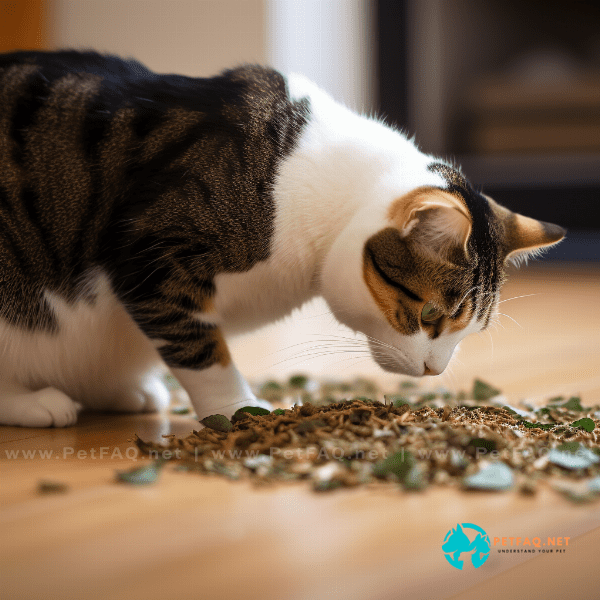
Understanding the Different Types of Aggression in Cats
Understanding the Different Types of Aggression in Cats
Aggression in cats can take many forms and can be caused by a variety of factors, including genetics, socialization, and environmental factors. Understanding the different types of aggression in cats is important when it comes to managing aggressive behaviors in felines.
2. Territorial Aggression: Territorial aggression is a form of aggression in which cats become aggressive when they feel their territory is being threatened. This can happen if a cat feels that another cat is encroaching on their territory or if they are exposed to catnip in a shared space.
3. Fear Aggression: Fear aggression is a common type of aggression in cats and is often seen in cats that have had negative experiences with humans or other animals. Cats that exhibit fear aggression may hiss, growl, or attack when they feel threatened.
4. Redirected Aggression: Redirected aggression is a type of aggression in which a cat redirects their aggression towards a person or animal that did not cause the aggression in the first place. This can happen if a cat becomes agitated by a perceived threat, such as a bird outside a window, and then redirects their aggression towards a person or animal in the same room.
In the next section, we’ll explore how to recognize signs of aggression in your cat and what you can do to manage aggressive behaviors in felines.

How to Recognize Signs of Aggression in Your Cat
How to Recognize Signs of Aggression in Your Cat
Recognizing signs of aggression in your cat is important when it comes to managing aggressive behaviors. Cats can exhibit a variety of aggressive behaviors, including hissing, growling, swatting, biting, or scratching. If you notice any of these signs in your cat, it is important to take steps to address the behavior to prevent injuries to other cats or even humans.
Here are some common signs of aggression in cats to look out for:
1. Body Language: A cat that is feeling aggressive may have their ears flattened against their head, their fur standing on end, and their tail twitching or thrashing.
2. Vocalizations: Cats that are feeling aggressive may hiss, growl, or yowl.
3. Aggressive Play: Cats that are engaging in play aggression may bite or scratch during play, but they do not intend to cause harm. However, play aggression can become a problem if it becomes too rough or aggressive.
4. Defensive Behavior: If a cat feels threatened, they may become defensive and lash out with aggressive behaviors such as biting or scratching.
If you notice any of these signs of aggression in your cat, it is important to take steps to manage the behavior. This may include limiting your cat’s exposure to catnip or other stimuli that trigger aggressive behaviors, providing alternative forms of feline enrichment, and working with a veterinarian or animal behaviorist to develop a behavior modification plan.
It is also important to make sure your cat is healthy and not experiencing any underlying medical issues that could be contributing to their aggressive behaviors. In some cases, medical issues such as pain or illness can cause cats to exhibit aggressive behaviors.
In the next section, we’ll explore some strategies for managing aggressive behaviors in cats, including behavior modification techniques and environmental modifications.

Tips for Managing Aggression in Cats Who React to Catnip
Tips for Managing Aggression in Cats Who React to Catnip
If your cat is prone to aggressive behaviors when exposed to catnip, there are some strategies you can try to help manage their behavior. Here are some tips for managing aggression in cats who react to catnip:
1. Limit Exposure: If you notice that your cat becomes aggressive when exposed to catnip, it is important to limit their exposure to the plant. You can do this by keeping catnip toys or plants out of your cat’s reach, or by only allowing your cat to interact with catnip in controlled situations.
2. Provide Alternative Enrichment: If your cat is prone to aggressive behaviors, providing alternative forms of enrichment can help redirect their energy and prevent them from becoming agitated. This might include providing toys that encourage interactive play, such as wand toys or puzzle feeders.
3. Behavior Modification: In some cases, behavior modification techniques can be effective in managing aggressive behaviors in cats. This might include positive reinforcement training or desensitization techniques that help your cat learn to associate positive experiences with situations that may have previously triggered aggressive behaviors.
4. Environmental Modifications: Making modifications to your cat’s environment can also help manage their aggressive behaviors. This might include providing separate spaces for cats that do not get along, or creating safe spaces where cats can retreat when they are feeling stressed or anxious.
5. Consult with a Veterinarian or Animal Behaviorist: If your cat’s aggressive behaviors are severe or are causing harm to other cats or humans, it is important to consult with a veterinarian or animal behaviorist. These professionals can help develop a customized behavior modification plan that is tailored to your cat’s specific needs.
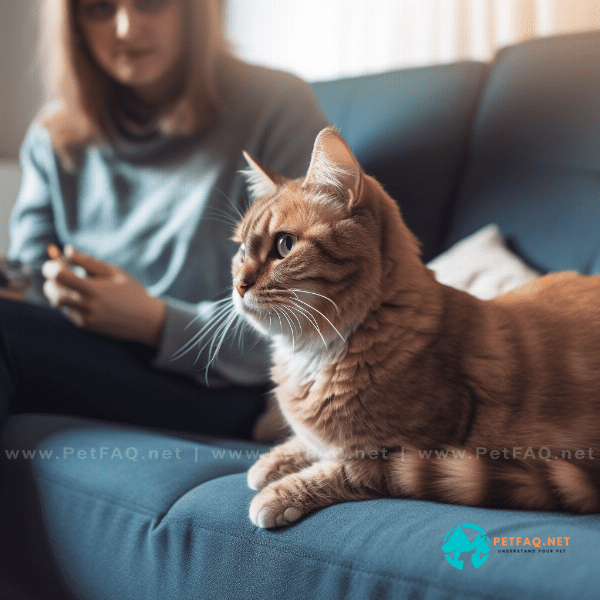
Alternatives to Catnip for Feline Enrichment and Play
Alternatives to Catnip for Feline Enrichment and Play
While catnip is a popular and effective way to enrich your cat’s environment and encourage play, not all cats respond positively to this plant. If your cat is one of the many felines that do not react to catnip, or if you are looking for alternative ways to enrich your cat’s environment, there are many other options available.
1. Silver Vine: Similar to catnip, silver vine is a plant that produces a compound that can have a stimulating effect on cats. Many cats that do not react to catnip will respond positively to silver vine, making it a great alternative for feline enrichment.
2. Valerian Root: Like catnip, valerian root contains a compound called nepetalactone that can have a stimulating effect on cats. While valerian root is not as well-known as catnip, it can be effective in encouraging play and providing enrichment for cats.
3. Toys and Games: Providing a variety of toys and games for your cat can be an effective way to encourage play and provide enrichment. This might include interactive toys such as puzzle feeders or wand toys, or even simple items such as paper bags or cardboard boxes that your cat can explore and play with.
4. Vertical Spaces: Cats are natural climbers, and providing vertical spaces such as cat trees or shelves can be a great way to provide enrichment and encourage play. This also provides cats with a safe and secure space to retreat to when they are feeling stressed or anxious.
5. Socialization: Providing opportunities for your cat to socialize with other cats or with humans can also be an effective way to provide enrichment and encourage play. This might include setting up playdates with other cats, or spending quality time playing and interacting with your cat.
By providing a variety of enrichment options and play opportunities, you can help keep your cat happy, healthy, and mentally stimulated. And if catnip doesn’t work for your cat, there are many other options available that can provide similar benefits.
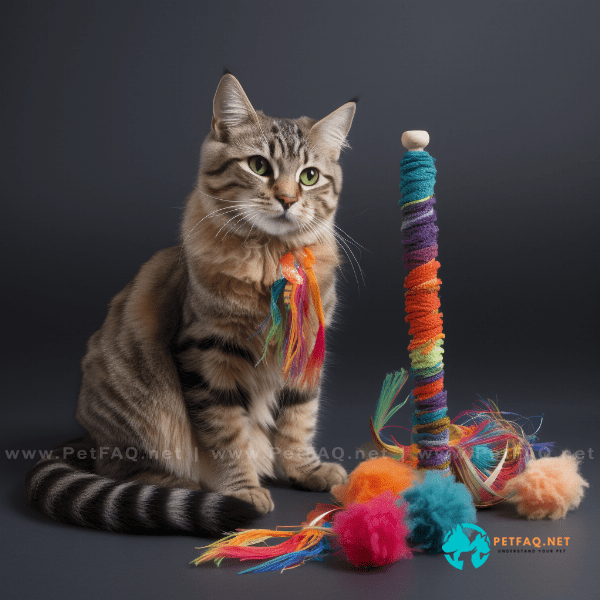
Seeking Professional Help for Aggressive Cats: When to Call a Veterinarian or Behaviorist
Seeking Professional Help for Aggressive Cats: When to Call a Veterinarian or Behaviorist
While many cases of aggression in cats can be managed with behavior modification techniques and environmental modifications, there are some cases where professional help may be necessary. If your cat’s aggressive behaviors are severe, frequent, or are causing harm to other cats or humans, it is important to seek help from a veterinarian or animal behaviorist.
Here are some signs that it may be time to seek professional help for your cat’s aggressive behaviors:
1. Frequent and Intense Aggression: If your cat is frequently displaying aggressive behaviors, or if their aggression is particularly intense, it may be a sign that something more serious is going on. This might include underlying medical conditions that are causing your cat to be more irritable or reactive.
2. Aggression Toward Humans: If your cat is displaying aggressive behaviors toward humans, it is important to seek help right away. This can include behaviors such as biting, scratching, or growling, and can pose a serious risk to the safety of humans in the household.
3. Aggression Toward Other Cats: If your cat is displaying aggressive behaviors toward other cats in the household, it may be a sign that there are underlying issues related to territory or socialization. In some cases, these behaviors can escalate and become dangerous, so it is important to seek help before the situation becomes worse.
4. Aggression During Play: While play aggression is common in cats, there are some cases where this behavior can escalate and become dangerous. If your cat is displaying aggressive behaviors during play that are causing harm to humans or other cats, it may be time to seek help.
If you are concerned about your cat’s aggressive behaviors, it is important to consult with a veterinarian or animal behaviorist right away. These professionals can help diagnose any underlying medical conditions that may be contributing to your cat’s aggression, and can develop a customized behavior modification plan that is tailored to your cat’s specific needs.
Remember, managing aggression in cats can be challenging, but with the right strategies and support, it is possible to help your cat learn to manage their behavior and live a happy and healthy life.
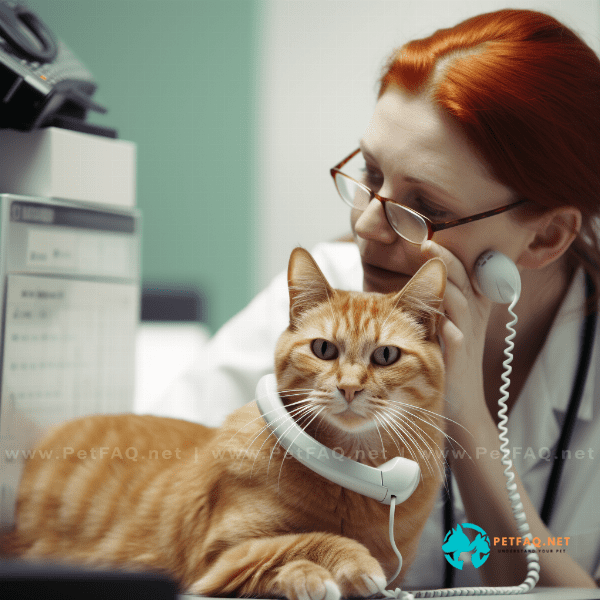
Final Thoughts: Keeping Your Cat Safe and Happy Around Catnip.
Final Thoughts: Keeping Your Cat Safe and Happy Around Catnip.
As we’ve seen, catnip can be a wonderful tool for feline enrichment and play. However, it’s important to remember that not all cats react to catnip in the same way, and for some cats, it can even trigger aggressive behaviors. Here are some final thoughts on keeping your cat safe and happy around catnip.
1. Observe Your Cat’s Behavior: Whenever you introduce a new toy or treat to your cat, it’s important to observe their behavior closely. This is especially true when it comes to catnip, which can trigger different responses in different cats. If you notice your cat becoming agitated or aggressive after consuming catnip, it’s important to remove it from their environment.
2. Use Catnip in Moderation: While catnip can be a great tool for feline enrichment, it’s important to use it in moderation. Too much catnip can over-stimulate your cat and cause them to become agitated or hyperactive. It’s also important to remember that not all cats react to catnip in the same way, so it’s best to start with a small amount and observe your cat’s behavior closely.
3. Provide Other Forms of Enrichment: While catnip can be a great tool for feline enrichment, it’s important to provide your cat with other forms of stimulation as well. This might include puzzle toys, scratching posts, and interactive playtime with their favorite human. By providing your cat with a variety of enrichment options, you can help prevent boredom and reduce the risk of aggressive behaviors.
4. Seek Professional Help When Needed: If your cat’s aggressive behaviors are severe or frequent, it’s important to seek professional help right away. This might include consulting with a veterinarian or animal behaviorist, who can help diagnose any underlying medical conditions that may be contributing to your cat’s behavior.
By following these tips and being mindful of your cat’s behavior, you can help ensure that your feline friend stays safe and happy around catnip. Remember, catnip can be a wonderful tool for feline enrichment, but it’s important to use it responsibly and in moderation.

Frequently Asked Questions (FAQs) about Catnip and aggression in cats:
1. Can catnip be used to calm a cat down after an aggressive episode?2. Can neutered or spayed cats also exhibit aggression after exposure to catnip?
3. Can catnip cause aggression in cats?
4. Are there any other plants or substances that can cause similar effects to catnip in cats?
5. What are the signs of aggression in cats?

